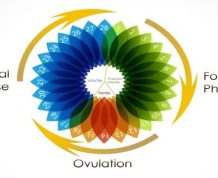Paternity tests are simple laboratory tests used to determine if a particular man is the biological father of a particular child. Paternity tests are DNA tests, used to determine if the man and child share the same DNA, and therefore if the man is the father of the child. Claim Your 20 Free Pregnancy Tests – Click Here

Paternity testing is actually very simple and non invasive. In fact, most people think that the paternity testing process is actually much more complicated than it actually is. The most common way of testing paternity is through a quick and simple cheek swab.
A cotton swab, similar to a Q-tip, is rubbed along the inside of the cheeks of both the man and the child in question. This process is quick, painless, and non invasive. It only takes a few seconds. Once the inside of the cheek has been swabbed, the DNA cells will be present on the swab. The swab is then sent to a laboratory for further evaluation and testing to determine if the man and child both share the same DNA cells.

DNA paternity testing is highly accurate, usually around 99.9%. It is the most accurate testing method that there is, and that is why it is such a highly trusted testing method. There are several different reasons that a DNA paternity test might need to be performed, but the most common reason is that the mother has had more than one sexual partner around the time of conceiving the child and there is a possibility that more than one person could have fathered the child.
If a woman wants to pursue getting financial support for a child, it is important that paternity be established. On the other hand, if a man believes to be the father of a child and wants to obtain custody of that child, he will have to have his paternity proven also. Sometimes people just want a paternity test for the peace of mind and satisfaction of knowing for sure who the father is.

Did you know that now paternity testing can be conducted while the baby is still in the womb? A CVS test is done between 10 and 12 weeks of pregnancy and involves extracting a small piece of the placenta to be tested. Between 15 and 22 weeks, an amniocentesis can be performed, which involves removing a bit of amniotic fluid to be tested.
There is a small chance of miscarriage associated with these tests, however, around 1 percent, and these tests are usually more expensive than other types of testing. You can, however, get at home paternity test kits that run around $100. If you go to a paternity testing facility, you can expect to pay around $500.










Comments